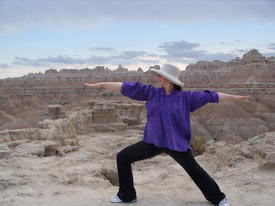Weight and age?

frankp
Posts: 83 Member
I've seen tables that show a healthy weight range that increases with age.
But, I've also read that (on average) as we age we lose muscle mass.
These two concepts seem to contradict each other.
But, I've also read that (on average) as we age we lose muscle mass.
These two concepts seem to contradict each other.
0
Replies
-
I've seen tables that show a healthy weight range that increases with age.
But, I've also read that (on average) as we age we lose muscle mass.
These two concepts seem to contradict each other.0 -
I know what you mean, However, I think that a healthy weight range for your age is equal to how good you feel about yourself.
(PROVIDED THAT YOU DO NOT HAVE AN UNHEALTHY BODY IMAGE TO START WITH!)
One of our Doctors told me.
Your healthy weight is when:
Your knees don't hurt as much ,
Your back is not sore when you wake up. OR when you go to bed.
When you can walk a mile like it was nothing,
and climb a flight or two of stairs without being out of breath.
What weight that is... THAT is an idea weight for you!
I liked that answer.
--Diann...0 -
Diann your doctor's advice is more than likely true, but it leaves too much up for guessing as far as individual ideal body weights go. Hopefully this will help you guys come up with a healthy ideal weight goal.
One thing that I would like to point out is that the BMI is completely outdated and promotes unhealthy diets, overexercise and anorexia. Read this for more information about the BMI myth: http://lifeandhealth.guardian.co.uk/wellbeing/story/0,,1958686,00.html
There are many more up-to-date and healther ways to determine your ideal weight. I would suggest that you first determine your bone structure: Small, Medium or Large.
The way to determine your bone structure is:
Put your thumb and middle finder around your wrist.
- Fingers overlap-small bone structure.
- Fingers touch-medium bone structure.
- Fingers dont touch-large bone structure.
Here is an excerpt from Dr Phil's book The Ultimate Weight Solution:Step 1:
Determine your get-real weight.
Your get-real weight is the healthiest and most realistic weight for you, based on your height, your bone structure, and your sex. It is not necessarily the weight of your youth, but rather a state of health and well-being that is congruent and in harmony with how you are physically and genetically configured. It is the weight that is "right" for you -- a stable, comfortable weight, at which you look good, feel good, and lovingly accept yourself from the inside out.
You can figure out your get-real weight by using my Body Weight Standards, a system I developed for my patients; it is a modified and more realistic version of height-weight tables. Though not perfect, these body weight standards are more reflective of what can be achieved and certainly a better measure of where most people should be, weight-wise.
Using the Body Weight Standards chart below, identify where you should be, so that you can move forward from where you are now. The lower end of the ranges are for small-boned people; the upper end, for larger-boned individuals. Be honest here: Don't subjectively say you are small-boned, when in fact, you are just the opposite. Your get-real weight is your target.
Dr. Phil's Body Weight Standards Height/Women/Men
4' 10"/90-100-110/114-127-140
4' 11"/95-105-116/119-132-145
5'/99-110-121/123-137-151
5' 1"/103-115-127/128-142-156
5' 2"/108-120-132/132-147-162
5' 3"/112-125-138/137-152-167
5' 4"/117-130-143/141-157-173
5' 5"/122-135-148/146-162-178
5' 6"/126-140-154/150-167-184
5' 7"/130-145-160/155-172-189
5' 8"/135-150-165/159-177-195
5' 9"/139-155-171/164-182-200
5' 10"/144-160-176/168-187-206
5' 11"/148-165-182/173-192-211
6'/153-170-187/177-197-217
6' 1"/157-175-193/182-202-222
6' 2"/162-180-198/186-207-228
6' 3"/166-185-204/191-212-233
6' 4"/171-190-209/195-217-239
My get-real weight is:_________________
Step 2:
Check and record your current weight and waist measurement before you start.
Do two things: First, step on the scale to weigh yourself to determine your starting point. Then, measure your waist with a tape measure positioned one inch above your navel. Taking waist measurements is important because weight distribution -- where you carry weight on your body -- can affect your health, for better or for worse. A too-large waistline circumference, for example, places you at greater risk for heart disease, diabetes, and certain cancers.
A waist measurement of 35 inches or more for women and 40 inches or more for men is cause for concern and may indicate that you are at risk for heart disease or diabetes. Keeping tabs on this simple measurement can protect you in some important ways.
Write your weight and waist measurement in the space below, along with the date.
Date: ____________
My weight: ____________
My waist measurement: ______________
Although I do not advocate obsessive weighing and measuring, you do need to monitor your progress toward your get-real weight with some regularity and reasonable frequency. You should weigh yourself at least at one- or two-week intervals to stay on target; then record your weight in a notebook or journal. The scales should show a weight loss that may be quite dramatic in the beginning, eventually tapering off to a steady, even loss of a few pounds each week. If you aren't dropping pounds at a steady rate, or if you gain weight, you should be motivated to course-correct some aspect of the weight loss plan to make it more effective, including changing your behavior so that it is harder for you to cheat.
Weigh yourself at the same time each week, because your weight fluctuates throughout the day, and you can weigh more at night than you do in the morning. Promise yourself you will not self-destruct if the scale moves up a few pounds, but instead make this a priority for action-oriented repair.
At monthly intervals, remeasure your waist and record these measurements. Watching your pounds and inches diminish will help reinforce your resolve and keep you moving in the right direction.
Hope that helps!0 -
Wow thanks for the all the information.
I'm really surprised at that table. I'm 5'11" (and small boned per Dr. Phils test) and the healthy BMI range for a male at 5'11" is 132 lbs. to 179 lbs..
The table from Dr. Phil has the healthy range for a 5'11" male is from 173 lb. to 211 lb.
I know when I was at 178 lb. I really started feeling crappy and it was effecting my performance at sports. Based on my experience I'd say Dr. Phil's weights are way to high for me. 5'11" at 211 lbs. I'd be carrying a lot of fat (unless i became extremely muscular)0 -
Well he does not provide a range per say. If you are 5'11" and small boned then your weight would be 173 or so. But it is awesome that you realize how your body performs. I think without having a personal trainer and/or doctor telling you what YOUR body's ideal weight is it is often easy to get lost and lose your motivation. I will say that I am not sure what sports you are into, but you don't see many athletes under 170 range and many are 200 and above if their sport requires muscle. I imagine you are into endurance related sports?
Anyway, as another personal testimony I will say what my experience is with BMI vs. the more modern standards of goal weights go. I am currently 272 pounds down from 285. But about 3 years ago I was at 278 and worked my way down to 219 pounds. At that time I knew only of the BMI scale which said I would need to be 174 or lighter to be healthy. At 219 pounds I was starting to look good and had a decent amount of muscle mass. I was literally perplexed as to how I would get to 174 and be healthy and look like anything more than a bean pole. So by my calculations for my height and bone structure my goal is 200 to 206. Which having been just 13 or so pounds off from it at a point in time seems like a much more accurate goal.
But each person will need to make the best decision for themselves or consult a professional who is certified to help you. And you should always reevaluate as you get closer to your goal.
P.S. Also there is a difference between 178 (weight gained is fat) and 178 (weight gained/maintained is muscle). By reading your profile I can see that at 178 it was from what you conclude is aged based weight (fat) gain. I would really recommend consulting a doctor, because your goal of reaching your "high school" weight of 155 and you being in your 50's seems sort of extreme. But again you do look to have a healthy appearance in your photos so far be it from me to say for sure. :happy: Just some friendly advice, not meant to insult.0 -
Hi J, Thanks for your reply.
To answer your question, I ski, golf (though my extra fat weight isn't much of a factor for golf), and play two man beach volleyball.
Two man beach volleyball is the sport that extra fat weight has the biggest impact on. You need to move quickly in the sand and be able to jump well. At only 5'11" and 50 years old it does take a certain level of fitness to be able to get above the 8' net in the deep sand for blocking and spiking. On a hard surface when I was in my thirties I was able to jump and touch 10'6", not spectacular but better than average. Recently at 178 lbs. I couldn't even touch the rim of a basketball hoop (which is 10'); I'd say at 5'11" that is a low level of fitness and strength. Now at 162 lbs. I can at least touch the rim again. I'm accounting for part of my decrease in jumping to be due to my age.
You have got me thinking that I shouldn't focus on weight but waist measurement instead. My bodies trouble spot happens to be my waist and if I measure my waist at my belly button in a normal relaxed posture it measures to 37.5" (although I wear 34" waist pants, the manufacturers are stroking our egos?). So I believe that would be an indication that I still have weight to lose. I'm thinking of setting my goal as being a 34" inch waist (at the belly button) and if I could do that and maintain my weight or even gain at the same time that would be great.0 -
http://www.self.com/fitness/nutrition/calculators/happyWeight
Here's a great tool that's been posted a few times here. . .
it takes into account your frame size and the lifestyle choices you'd like to make. For example, I like to have a cookie every once in a while, and this takes that in account.0 -
V,
It came up with 152.5 lbs.
The calculator didn't ask if I was male or female. Don't you think that would be an important question?0 -
V,
It came up with 152.5 lbs.
The calculator didn't ask if I was male or female. Don't you think that would be an important question?
Um, yep. . .it would. I didn't realize. . .I guess "Self" is for the ladies. . .? Sorry.0 -
V,
It came up with 152.5 lbs.
The calculator didn't ask if I was male or female. Don't you think that would be an important question?
Um, yep. . .it would. I didn't realize. . .I guess "Self" is for the ladies. . .? Sorry.
Yeah that's probably right though it does ask for frame size so maybe... But I think most likely it's just for the ladies.0
This discussion has been closed.
Categories
- All Categories
- 1.4M Health, Wellness and Goals
- 398.2K Introduce Yourself
- 44.7K Getting Started
- 261K Health and Weight Loss
- 176.4K Food and Nutrition
- 47.7K Recipes
- 233K Fitness and Exercise
- 462 Sleep, Mindfulness and Overall Wellness
- 6.5K Goal: Maintaining Weight
- 8.7K Goal: Gaining Weight and Body Building
- 153.5K Motivation and Support
- 8.4K Challenges
- 1.4K Debate Club
- 96.5K Chit-Chat
- 2.6K Fun and Games
- 4.8K MyFitnessPal Information
- 12 News and Announcements
- 21 MyFitnessPal Academy
- 1.6K Feature Suggestions and Ideas
- 3.2K MyFitnessPal Tech Support Questions


